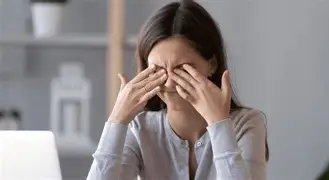Dry Eye Disease
Understanding Dry Eye Disease
Healthy vision depends on a stable flow of tears that keep the eyes lubricated, nourished, and protected. Tears are made up of water, oils, mucus, antibodies, and proteins—together forming a protective tear film. When there is an imbalance in this system, the eye may not produce enough quality tears, resulting in dry eye disease or ocular surface dysfunction.
Common Dry Eye Symptoms
When the eyes are not properly lubricated, patients may experience:

-
Burning, stinging, or pain
-
Light sensitivity (photophobia)
-
Gritty or sandy sensation
-
Feeling of something in the eye (foreign body sensation)
-
Itching and redness
-
Blurry or fluctuating vision
-
Excess tearing or watery eyes (reflex tearing due to dryness)
It may seem strange, but watery eyes can be a sign of dry eye syndrome. When the ocular surface becomes dry, the eyes produce a reflex flow of watery tears—but these are low in oils and mucus, so they don’t properly coat or protect the eye.
What Causes Dry Eye?
Dry eye can be caused by decreased tear production or increased tear evaporation. Common risk factors include:
-
 Aging and hormonal changes, especially during menopause
Aging and hormonal changes, especially during menopause -
Environmental factors: air conditioning, heating systems, ceiling fans, wind, smoke, and digital screen use
-
Medications: antihistamines, antidepressants, blood pressure medications, birth control pills
-
Autoimmune diseases: Sjögren’s syndrome, rheumatoid arthritis, lupus, collagen vascular disease
-
Eyelid issues (incomplete blinking or eyelids not closing fully)
-
Meibomian gland dysfunction (MGD) leading to poor tear film oil layer
Advanced Dry Eye Treatments
Although dry eye disease is chronic, it can be effectively managed with personalized treatment plans. Modern treatment options include:
1. Artificial Tears & Lubricating Ointments
-
Over-the-counter lubricating eye drops are often the first line of treatment.
-
Preservative-free artificial tears are recommended for frequent use or sensitive eyes.
-
Thick gel or ointments may be used at night for severe dryness.
2. Punctal Plugs (Punctal Occlusion)
-
Tiny silicone plugs are inserted into the tear ducts to help retain natural tears on the eye surface longer.
-
This can significantly reduce dryness and decrease the need for eye drops.
3. Prescription Eye Drops for Tear Production
-
Restasis (cyclosporine) – Increases natural tear production over time.
-
Cequa – A higher-strength cyclosporine drop that enhances tear film and reduces inflammation.
-
Xiidra (lifitegrast) – Targets inflammation on the ocular surface, improving symptoms and eye comfort.
-
Vevye – A newer water-free cyclosporine formulation that improves tear production with enhanced comfort.
-
Tryptyr – An emerging therapy for neuropathic dry eye and chronic eye discomfort.
- Meibo- A novel drop that helps evaporative dry eye or meibomian gland dysfunction.
4. Tear Film & Eyelid Gland Support
-
Lacrifill (hyaluronic acid-based punctal filler) – A dissolvable gel injected into the tear duct to retain moisture for months.
-
Meibomian gland treatments: thermal pulsation (LipiFlow), IPL (intense pulsed light), and manual gland expression help improve the oily layer of the tear film.
5. Anti-Inflammatory & Steroid Eye Drops
-
Short-term use of topical steroids may be recommended to calm flare-ups and reduce inflammation.
Relief Is Possible
If you are experiencing burning, blurry vision, or discomfort from chronic dry eye syndrome, today’s advanced treatments—from Cequa to Lacrifill—offer more relief than ever before. Schedule an evaluation to determine the cause of your dry eye and create a personalized treatment plan.








If you would like more information about Dry Eye Disease or to schedule an appointment, feel free to fill out our convenient contact form or call us directly at 215-997-2015.